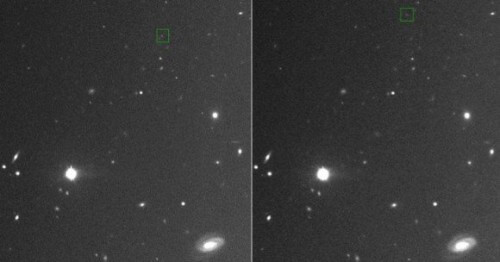"The two moons are part of a large swarm that surrounds Jupiter from a wide distance. Apparently there are about a hundred such bodies" says their discoverer, Scott Shepherd
Lilian Ortiz, Universe Today

Technological advances in telescopes have led to the discovery of new planets outside the solar system and now new moons in our backyard.
Last September, two new moons were discovered orbiting Jupiter - the smallest discovered so far. The discovery brings the number of known Jupiter moons to 66. Each of these moons is about one kilometer in diameter and they are very far from Jupiter. It takes them 580 and 726 days to orbit the gas giant.
The discovery can lead us one step closer to understanding the process of the formation and development of the solar system. So hopes Scott Shepherd, who works in the Department of Earth Magnetism at the Carnegie Institution for Science in Washington. It was Shepherd, aided by the Magellan Telescope located in Las Campanes, Chile, who first spotted the moons.
"The two moons are part of a large swarm that surrounds Jupiter from a wide distance. Apparently there are about a hundred such bodies," says Shepherd, who explained that Magellan made it easier to identify objects far from Earth. "Until the last decade, the technology to detect moons of this size did not exist because they are very small and pale."
The two irregular (non-spherical) moons of Jupiter are meanwhile named S/2011 J1 and S/2011 J2. After they are finally approved (Shepard estimates that this will happen this year) he will have the opportunity to suggest names for each of them. According to the World Astronomical Union, we must refer to Jupiter or Zeus, the father of the gods in Roman and Greek mythology respectively. The pool of names is exhausted, and if we go by Shepherd's estimates, there will be another hundred such bodies around Jupiter and many more around the other gas giants.
"There are many objects orbiting Saturn and Neptune-Rahab that are farther from the Sun," said Shepard, "Discovering more small, distant and irregular bodies is the key to our understanding of our past."
The reason: regular moons are captured by the planets because they orbit it in a direction opposite to its axis of rotation and have eccentric (extreme) orbits and are in orbits inclined to the planet's equator. This is in contrast to the regular moons that were formed, according to the scientific assessment, from the same materials as the planet, and have near-circular orbits and orbit the planet in the same direction as the direction of the planet's self-rotation.
"A planet can capture a body such as Shoemaker-Levy 9, but currently the planet does not have an effective mechanism to capture the satellite regularly. Therefore, the puzzle of the outer satellites had to be done during the formation of the planets, when the solar system was not arranged as it is today," he said.
"Finding the orbital history of these moons will be complex, but understanding the origin of these bodies can tell us about the days of the creation of the solar system and its development." said.
For the news in Universe Today

4 תגובות
So is Jupiter the gas giant?
I thought Yitzchak Tshuva...
Indeed, it is ridiculous to call any rock block that has fallen into orbit around some planet a "moon". Some kind of dividing line should be drawn, and these two bodies should be on the other side of it.
Maybe a satellite is really better?
Why is such a small body called the moon?